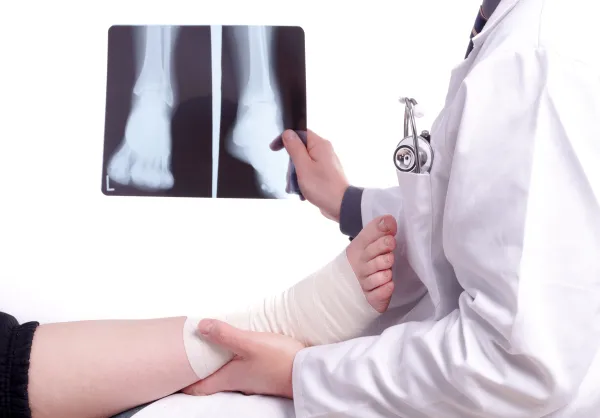Use This Advice to Unlock Nail Care Reporting Success

Check with payer on proper diagnoses for the service.
When your clinician performs routine nail care for a patient, you should not only be aware of the codes that you need to report for the procedure; you should also be aware of the coverage guidelines for the procedure.
Bust these three common myths surrounding routine nail care that will help you overcome reimbursement hassles and ensure reporting success each time your clinician performs this procedure.
Myth 1: Trimming and Debridement are same and interchangeable
Reality: When your clinician performs routine nail care for a patient, he will either perform a trimming of the nails or perform a debridement. These procedures are different and identified by different CPT® codes that you have to report for the procedure performed. “Nail trimming is preventive where debridement is performed for an active issue that is well documented by the physician,” says Suzan (Berman) Hauptman, MPM, CPC, CEMC, CEDC, senior principal of ACE Med, a medical auditing, coding and education organization in Pittsburgh, Pa.
When your clinician performs trimming of a nail, it indicates that he only shortened the nail length, and he did not perform any changes to the shape or thickness of the nails. When your clinician performed trimming, you report it with one of the following codes depending on the condition of the nail:
You choose to report G0127 if your physician is performing the trimming for dystrophic nails, while you have to report 11719 when your clinician is performing routine nail care for a patient with healthy nails. If your clinician is performing routine nail care for a non-Medicare patient, your payer might want you to additionally report HCPCS Level II code S0390 (Routine foot care; removal and/or trimming of corns, calluses and/or nails and preventive maintenance in specific medical conditions [e.g. diabetes], per visit) along with 11719.
On the other hand, if your clinician performs removal of excessive nail structure for reducing the thickness of the nail or to correct excessive curvature of a diseased or dystrophic nail, you will need to report a debridement code instead of a trimming code. When your clinician performs debridement, you report one of the following two codes on the basis of the number of toenails that your clinician treated:
Myth 2: Report One Unit of Code for Every Toenail Treated
Reality: This is not true. When you look at the descriptor of the CPT® code that you are reporting for the nail care, you will see that each of these codes carries a “number” descriptor. Since the CPT® codes contain the appropriate numbers in their descriptors, you will only report one unit of that code. “The trimming code, 11719 is for one or ten whereas the debridement codes are specific based on the number of toes needing debridement,” Hauptman says.
If your clinician performed trimming, you will only report one unit of either G0127 or 11719, depending on whether your clinician is trimming dystrophic nails or healthy nails. Since the descriptor to both G0127 and 11719 carry the term “any number,” you only report one unit of the code, irrespective of the number of nails your clinician trimmed during the encounter.
If your clinician performed debridement, you report either 11720 or 11721, depending on the number of nails that your clinician debrided. “The 11720 is for 1-5 toes and the 11721 is for 6 or more toes,” Hauptman says. If more than six nails were debrided, you don’t have to report 11720 for the debridement of the first five nails and then report 11721. If your clinician debrided more than six nails, you only have to report 11721.
“In either case, you report one unit of the code, regardless of the number of nails involved,” says Kent Moore, senior strategist for physician payment at the American Academy of Family Physicians. “For instance, if the physician debrided seven nails, you would report one unit of 11721, not seven.”
The debridement codes also include the phrase, “by any method(s).” So, irrespective of the method(s) your clinician employs to perform the debridement, you will still report the appropriate debridement code just by counting the nails that your clinician treated. “And if the physician used more than one method, you still only report one code,” Moore adds. For instance, if your clinician performed nail debridement on five different nails using manual and electrical grinders, you still report just one unit of 11720, counting only the number of nails treated.
Myth 3: Routine Nail Care is Covered for All Patients
Reality: Medicare does not provide coverage for routine foot, care including the care of nails, except when systemic condition(s), such as metabolic, neurologic, or peripheral vascular disease, result in severe circulatory embarrassment or areas of diminished sensation in the individual’s legs or feet. Under those conditions, foot care that would otherwise be considered routine may be covered as reasonable and medically necessary. Otherwise, Medicare assumes that patients or their caregivers will perform these services by themselves.
Medicare has interpreted routine foot care to include, among other things, any foot care services performed in the absence of localized illness, injury or symptoms involving the foot. Medicare will generally not provide coverage for routine nail care such as clipping, trimming, or debridement of nails (including trimming of mycotic nails).
As noted, you will receive coverage for routine nail care only if the patient suffers from any systemic conditions such as metabolic, neurological or peripheral vascular disease of sufficient severity that it will put the patient at risk if the nail care is performed by a non-professional. Some such systemic conditions that will warrant coverage for routine nail care include diabetes mellitus (E08.00-E13.9), arteriosclerosis of native arteries (I70.201-I70.92), phlebitis and thrombophlebitis of lower extremities (I80.00-I80.9), abscess, cellulitis, and lymphangitis of toe and foot, etc.
If there is no covered diagnosis, you will not receive coverage for routine nail care. Apart from systemic conditions that necessitate routine nail care, you will also receive coverage for nail care when the patient is suffering from mycosis of the nails and is experiencing pain, possibility of secondary infections, or reduced ambulation due to the affected nail(s). You can also receive coverage for routine nail care when the patient presents with other nail related conditions such as onychogryphosis (L60.2) or onychauxis (L60.2or Q84.5 if the condition is congenital).
When nail care is provided to a patient with a systemic condition, you need to document class findings in the patient record to support the medical necessity of providing this service. Class A findings mean “non-traumatic amputation” of the foot or integral part of the foot skeleton. Class B findings include absent posterior tibial or dorsalis pedis pulse or three of the following: hair growth (decrease or absence) nail changes (thickening) pigmentary changes (discoloration) skin texture (thin, shiny) skin color (rubor or redness). Class C findings include edema, claudication, temperature changes, abnormal spontaneous sensations in the feet (paresthesia), and burning.
You have to use the Q7 modifier to indicate one Class A finding, Q8 modifier to indicate two Class B findings, or Q9 modifier to indicate one Class B finding and two Class C findings.
Resources: For more information, check these links at https://www.cms.gov/Outreach-and-Education/Medicare-Learning-Network-MLN/MLNMattersArticles/downloads/SE1113.pdf and https://www.cms.gov/Regulations-and-Guidance/Guidance/Manuals/Downloads/bp102c15.pdf.




